-


How might we ensure that a school that was created to be a Black cultural institution remains so even in the exploration of a new location?
June - May 2024
Staff aggressively studied, engaged in dialogue, and pursued a number of alternate relocation options.
Concurrently, Portland Public Schools was made aware of funding-related project delays with the Oregon Department of Transportation’s efforts to expand the I-5. These external factors will continue to impact PPS’ project timelines, but PPS will continue to update the community based on future developments.
We are grateful for the investment of time and energy of all community stakeholders as we’ve learned together.
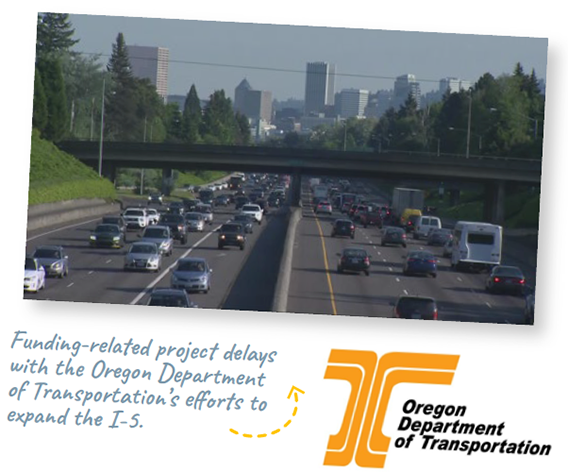
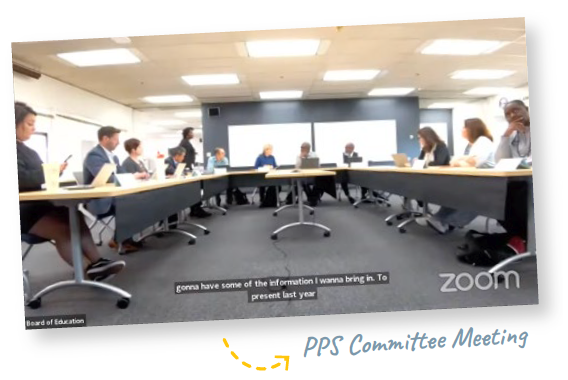
June 2023
By the June Facilities and Operations Committee Meeting, Portland Public Schools board members accepted staff’s recommendation and community advocacy to not move forward with the previous options to allow for further exploration.
March - May 2023
Portland Public Schools began to socialize the options with engaged community members asking pointed questions about excitement, opportunities, and barriers the options created for students, staff, and neighboring community members.
The initial round of engagement proved inconclusive as responses varied drastically based on audience and entry point into the conversation. Notably, Jefferson Modernization project stakeholders raised concerns about the misalignment of information and project timelines.
In response, Portland Public Schools staff requested a “pause and reset” period within the community to reorient community members to the discussion in a unified manner and collectively problem solve.
At the leadership of the Innovation Studio and in collaboration with staff teams and partners like Colloqate Design and I AM MORE, Portland Public Schools launched a 3-part workshop series that surfaced new and creative ideas to address relocation centering the needs of Black students. It also surfaced which previously considered sites community members requested further diligence on.
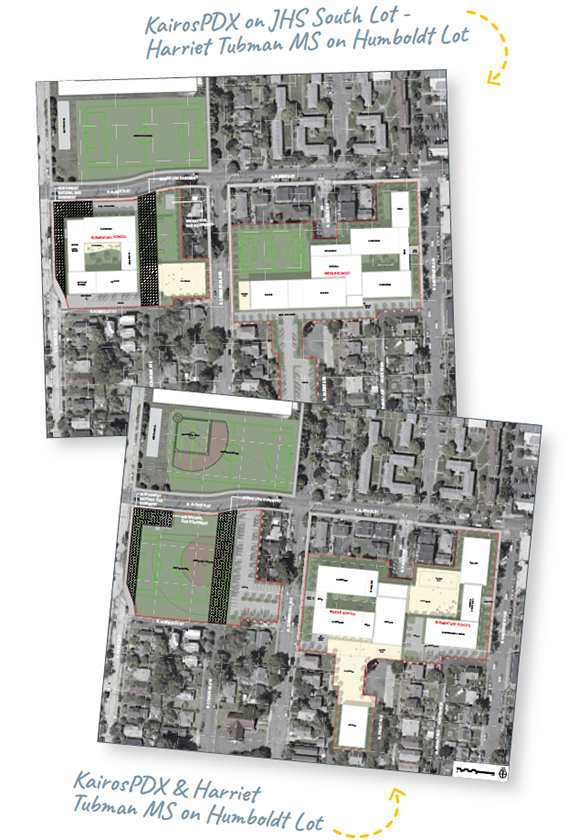
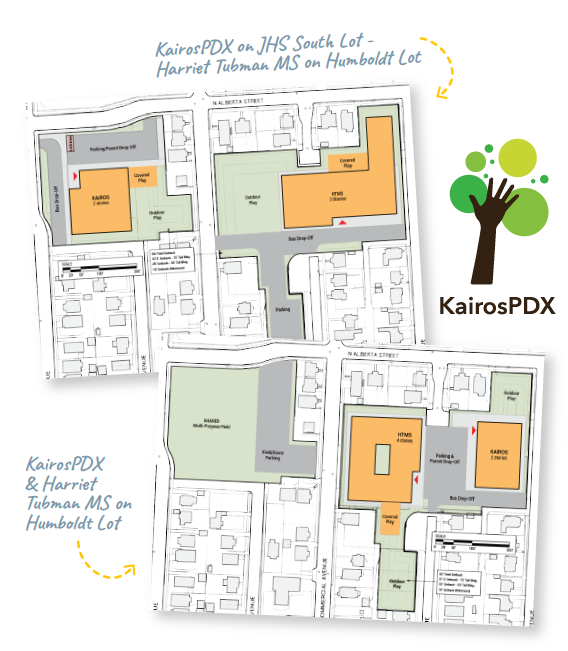
February 2023
PPS’ operational team considered several sites to be the new location for Tubman, but none were viable. KairosPDX recognized the need for an appropriate new home for Tubman and reached out to PPS to explore a partnership. KairosPDX, an educational nonprofit with a PPS-approved public charter school, holds a long-term lease in PPS’s former Humboldt building.
This partnership enables Portland Public Schools to study the possibility of the site KairosPDX currently sits on as well as the Jefferson High School South Lot. PPS and KairosPDX are committed to eliminating prolific racial achievement and opportunity gaps and will work with the community to explore location options.
Accordingly, our goal is to ensure the community is involved at every step of the process. When we collaborate and share ideas and dreams, everyone has a chance to shape our vision for Black student excellence.
September 2022
The Portland School Board unanimously approves a historic partnership agreement with community-based organizations, launching a process to make the CBSE a reality.
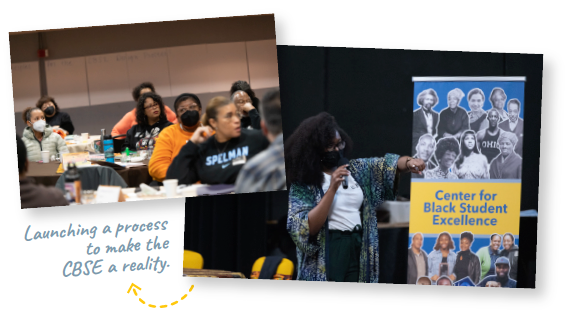
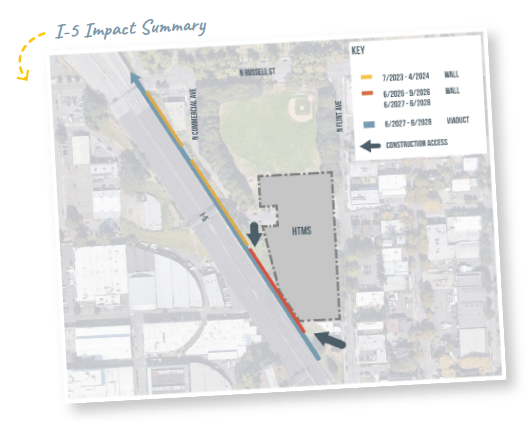
2021
In the fall of 2021, the operational side of PPS was instructed by the PPS Facilities and Operations Committee to begin a process to study viable sites for the future Harriet Tubman Middle School in response to the Oregon Department of Transportation’s (ODOT) decision to expand I-5.
Resolution 6354 Protecting PPS Students, Staff, and Communities in Oregon Department of Transportation’s I-5 Rose Quarter Project
Due Diligence 1 | Due Diligence 2
Due Diligence 3 | Due Diligence 42020
Portland voters overwhelmingly support the extension of a property tax to support school improvements and renovations, Jefferson High School renovation, and the creation of a Center for Black Student Excellence (CBSE). Separately, the state agreed to pay to relocate HTMS because of the widening of Interstate 5 in the Rose Quarter and concerns about the air quality.
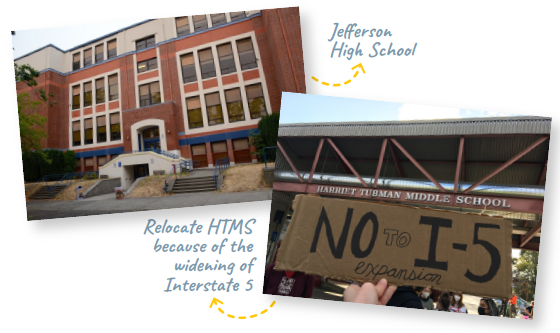
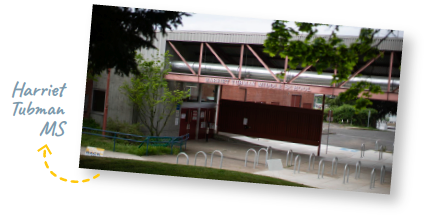
2016
Air quality at Tubman resurfaces as a concern as city and state regulators investigate pollution concerns due to toxic air emissions from a nearby glass manufacturer.
2012
The Young Women’s Academy closes because of low enrollment.
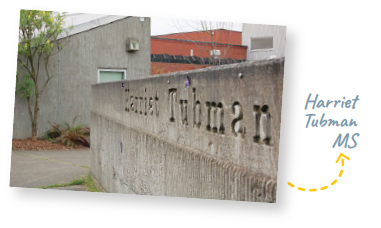
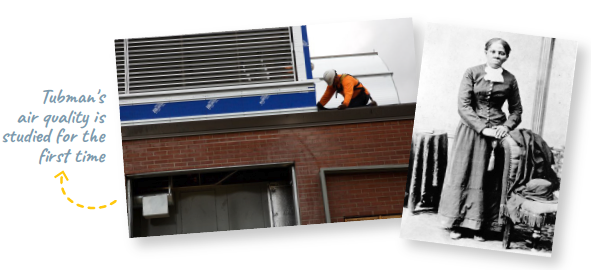
2009
Tubman's air quality is studied for the first time as the Environmental Protection Agency places air monitors nearby. The Harriet Tubman Young Women's Academy, a magnet program, begins operations at the site.
March 1982
The School Board reverses its decision and places the Harriet Tubman Middle School at the Boise site, dismantling the last elementary school within the Black community. This is done over the objections of Superintendent Matthew Prophet and many community organizations.
March/April 1982
The Black United Front and its supporters organize protests against the Portland School Board’s reversal of the Tubman decision.
April 1982
The School Board files suit against the Black United Front and its supporters. The Board subsequently agrees to mediation with Black community leaders, and through this process, reinstates their plan to locate Harriet Tubman Middle School at the Eliot site as originally promised.
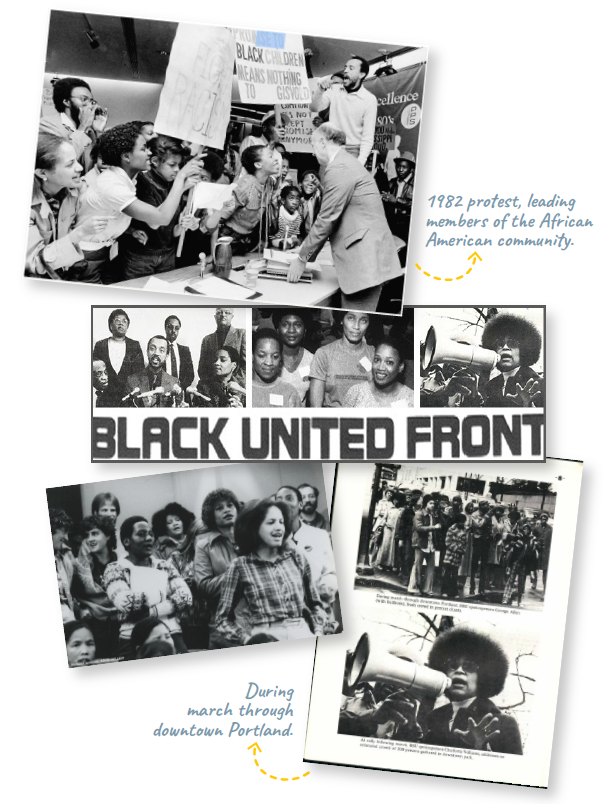
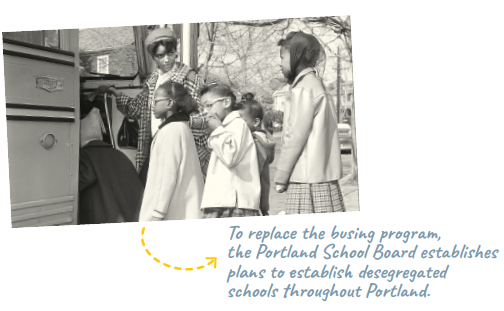
1980
To replace the busing program, the Portland School Board establishes plans to establish desegregated schools throughout Portland. Under the plan, Harriet Tubman Middle School would be located at the Eliot Childhood Education Center, near Memorial Coliseum. Locating Tubman Middle School at the Eliot Center site would allow the last K-8 school within the black community, Boise Elementary School, to remain open.
1974
The City of Portland initiates the Office of Neighborhood Associations (now the Office of Community & Civic Life); Lower Albina is not granted a neighborhood association, as smaller neighborhoods in Boise, Eliot and Lloyd organize their own associations.

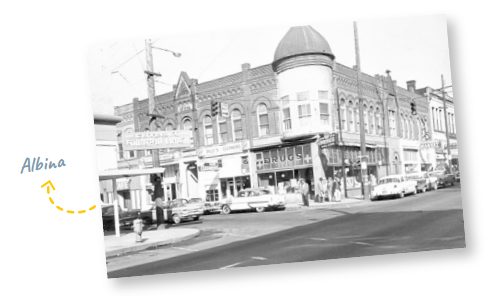
1969
The Model Cities Program, funded by the federal government, is implemented in Lower Albina to revitalize the area, with mixed success. Albina Art Center and Albina Corporation are formed to create jobs and enrich cultural life in the neighborhood.
1964
The Oregon Department of Transportation expands I-5 through Albina, in the heart of Portland's black community, demolishing hundreds of homes and severing streets in the process.
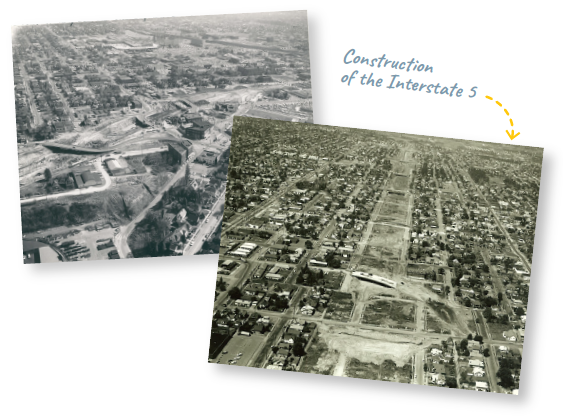
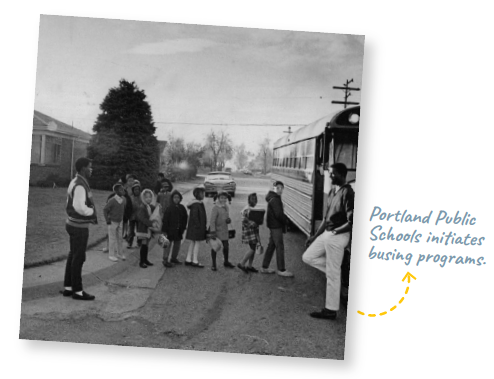
1960s
Portland Public Schools initiates busing programs, and the impact of busing falls mostly on Black families who see their children going to school in other neighborhoods. However, there is no corresponding effort to see that Black students thrive in other schools or that their test scores improve. Busing systematically lowered enrollment numbers at schools in Black communities – leading school leaders to justify closing these schools.
1952
A new neighborhood school at 2231 North Flint Avenue in Portland opens as Eliot Elementary.
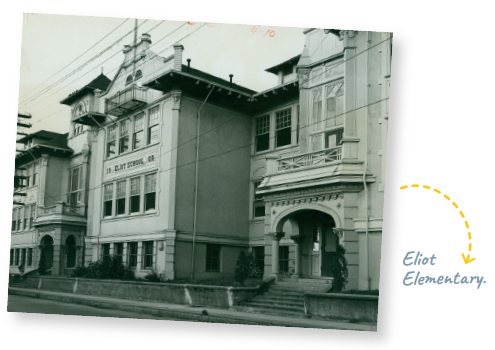
Select a School...
Select a School
- Abernethy Elementary School
- ACCESS Academy Alternative Program
- Ainsworth Elementary School
- Alameda Elementary School
- Alliance High School at Kenton
- Alliance High School
- Arleta K-5
- Astor K-8
- Atkinson Elementary School
- Beach School
- Beaumont Middle School
- Benson High School
- Beverly Cleary K-8
- Boise-Eliot/Humboldt Elementary School
- Bridger Creative Science School
- Bridlemile Elementary School
- Buckman Elementary School
- Capitol Hill Elementary School
- Chapman Elementary School
- Chief Joseph Elementary
- Clark K-5
- Cleveland High School
- College & Career Readiness
- Creston K-5
- Cesar Chavez School
- da Vinci Arts Middle School
- Dr. Martin Luther King Jr. Elementary School
- Duniway Elementary
- Faubion PK-8
- Forest Park Elementary School
- Franklin High School
- George Middle School
- Glencoe Elementary School
- Grant High School
- Grout Elementary School
- Harriet Tubman Middle School
- Harrison Park Middle School
- Hayhurst Elementary School
- Hosford Middle School
- Ida B. Wells High School
- Irvington Elementary School
- Jackson Middle School
- James John Elementary School
- Jason Lee Elementary School
- Jefferson High School
- Kellogg Middle School
- Kelly Elementary School
- Lane Middle School
- Laurelhurst K-8
- Lent K-5
- Lewis Elementary School
- Lincoln High School
- Llewellyn Elementary School
- Maplewood Elementary School
- Markham Elementary School
- Marysville K-5
- McDaniel High School
- Metropolitan Learning Center
- Mt. Tabor Middle School
- Future Now
- Media Center
- Bond
- Ockley Green Middle School
- Odyssey Program
- Peninsula K-5
- Pioneer Special School Program
- Portland Evening and Summer Scholars
- PREP
- Richmond Elementary School
- Rieke Elementary School
- Rigler Elementary School
- Robert Gray Middle School
- Roosevelt High School
- Rosa Parks Elementary School
- Rose City Park Elementary School
- Roseway Heights Middle School
- Sabin Elementary School
- Scott Elementary School
- Sellwood Middle School
- Sitton Elementary School
- Skyline K-8
- Stephenson Elementary School
- Sunnyside Environmental K-8
- Vernon K-8
- Vestal Elementary School
- West Sylvan Middle School
- Whitman Elementary School
- Winterhaven K-8
- Woodlawn K-5
- Woodmere Elementary School
- Woodstock Elementary School


